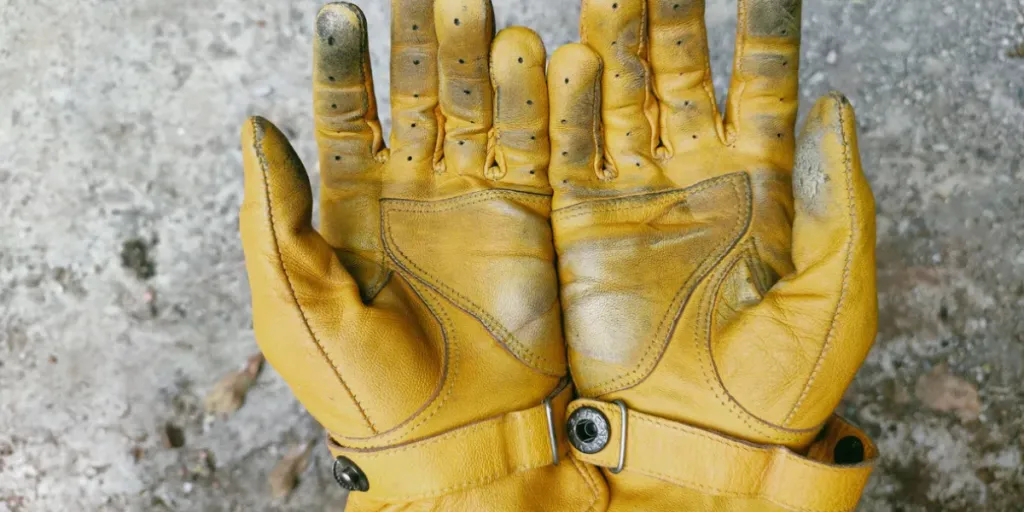As 2025 approaches, the global safety glove market is on the brink of expansion, driven by heightened safety regulations and technological advancements. With projections indicating the market will double its size by 2030, business buyers must stay ahead by understanding the evolving landscape of safety glove selection.
Table of Contents:
Safety Glove Market Overview
Detailed Analysis of the Safety Glove Market
Key Considerations for Selecting Safety Gloves
Exploring the Diverse Types of Safety Gloves
Understanding Safety Glove Standards and Certifications
Wrapping It Up
Safety Glove Market Overview

The global market for industrial safety gloves is experiencing significant growth. By the end of 2024, the market size is estimated to reach USD 13.6 billion and is projected to expand further to USD 28.4 billion by 2030, growing at a robust CAGR of 11.1%. This growth is driven by increasing awareness of workplace safety and stringent occupational safety regulations across various industries. Safety gloves are widely adopted in sectors such as automotive, chemicals, food processing, and healthcare, where the risk of exposure to hazardous materials, mechanical risks, and environmental dangers is high.
Natural rubber gloves hold the largest market share due to their excellent barrier properties and cost-effectiveness. There is also growing demand for nitrile and neoprene gloves, which offer superior chemical resistance and durability. Geographically, North America leads the market, followed by significant growth in the Asia-Pacific region, particularly in China, Japan, and India, driven by rapid industrialization and stringent safety regulations.
Market dynamics are influenced by technological advancements in glove manufacturing, which have led to the development of gloves with enhanced protection features, comfort, and functionality. Additionally, the rise of e-commerce and expanding distribution networks have made safety gloves more accessible to consumers and businesses globally.
Detailed Analysis of the Safety Glove Market

Key Performance Benchmarks
The industrial safety gloves market is characterized by several key performance benchmarks. The disposable gloves segment is expected to reach USD 18.9 billion by 2030, growing at a CAGR of 11.6%. Reusable gloves are also poised for growth, with a CAGR of 10.2% over the same period. The performance of these segments is driven by the need for hygiene and cross-contamination prevention in industries such as healthcare and food processing.
Market Share Dynamics
The market is highly competitive, with several key players holding significant market shares. Companies such as 3M Co., Ansell Ltd., and Top Glove Corp. Bhd lead the market with their extensive product portfolios and strong distribution networks. These companies continually innovate to introduce new products and enhance existing ones, helping them maintain their market positions. Strategic alliances and mergers are also common, allowing companies to expand their market reach and product offerings.
Economic Influences and Consumer Behavior Shifts
Economic factors such as volatility in raw material prices, particularly for latex and nitrile, can impact the profitability of manufacturers. Additionally, the increasing cost of compliance with safety regulations can influence market dynamics. However, growing awareness of workplace safety and rising demand for personal protective equipment (PPE) are driving consumer behavior shifts towards higher adoption of safety gloves.
Recent Innovations
Recent innovations in the safety glove market include the introduction of antimicrobial technology (AMT) in gloves, enhancing their ability to prevent the spread of infections. The development of touchscreen-compatible gloves has also gained traction, catering to workers who need to use electronic devices while maintaining hand protection. Furthermore, the use of green and recyclable materials in glove manufacturing is becoming increasingly popular, aligning with global sustainability trends.
Environmental Regulations
Environmental regulations play a significant role in shaping the safety glove market. The push for eco-friendly and biodegradable gloves is driven by stringent regulations aimed at reducing environmental impact. Companies are investing in research and development to create gloves that comply with these regulations while maintaining high performance and durability standards.
Customer Pain Points
Despite market growth, customers face several pain points, including allergic reactions to certain glove materials, such as latex. Additionally, inconsistencies in the quality of imported gloves due to varying international manufacturing standards can be a concern. Addressing these pain points through innovation and stringent quality control measures is crucial for manufacturers to maintain customer satisfaction and market share.
Brand Positioning and Differentiation Strategies
To stand out in the competitive market, companies focus on brand positioning and differentiation strategies. This includes offering a wide range of products tailored to specific industry needs, emphasizing the quality and performance of their gloves, and investing in marketing campaigns to raise awareness about their products’ safety and efficacy. Collaborations with industry bodies and compliance with international safety standards also enhance brand credibility and trust among consumers.
Niche Markets
Niche markets such as cleanroom environments, where contamination control is critical, are also driving demand for specialized safety gloves. The cleanroom PPE and gloves market is expected to grow at a CAGR of 6.52%, reaching USD 5.44 billion by 2030. The heightened focus on maintaining stringent cleanliness standards in industries like pharmaceuticals, biotechnology, and medical devices is contributing to this growth.
In conclusion, the safety glove market is poised for substantial growth, driven by technological advancements, stringent safety regulations, and increasing awareness of workplace safety. Companies that invest in innovation, quality control, and strategic marketing are well-positioned to capitalize on the expanding market opportunities.
Key Considerations for Selecting Safety Gloves

When choosing safety gloves, it’s important to consider factors that ensure protection, comfort, and functionality. Here are the key considerations:
Material and Construction
The material and construction of safety gloves are vital in determining their suitability for specific tasks. Common materials include leather, nitrile, neoprene, and rubber, each with unique properties. Leather gloves offer excellent abrasion resistance and durability, ideal for heavy-duty work. Nitrile gloves provide superior chemical resistance, making them suitable for handling hazardous substances. The construction should ensure a comfortable fit and flexibility for easy movement.
Protection Levels
Safety gloves need to provide the right protection against workplace hazards like cuts, punctures, chemicals, heat, and electrical shocks. For example, chainmail gloves are effective in preventing cuts and punctures, ideal for meat processing or glass handling. Chemical-resistant gloves, made from materials like butyl or Viton, are crucial for handling corrosive substances. Matching the glove’s protection level with potential risks is essential for safety.
Fit and Comfort
Proper fit is crucial for gloves to work effectively. Gloves that are too tight can restrict movement and cause discomfort, while loose gloves can reduce dexterity and increase accident risk. Many gloves come in various sizes with adjustable cuffs for a snug fit. Additionally, gloves should be breathable and lightweight for comfort during long use. Ergonomic designs that mimic the natural hand shape can further enhance comfort and reduce hand fatigue.
Compliance and Certification
Safety gloves should comply with industry standards and certifications to ensure performance and reliability. Standards like ANSI, EN, and ISO specify requirements for glove performance, including cut resistance, chemical resistance, and thermal protection. For instance, gloves certified under ANSI/ISEA 105 assure their cut resistance levels. Ensuring compliance with these standards helps in selecting gloves that meet necessary safety requirements.
Durability and Longevity
Durability is critical for the lifespan of safety gloves. Durable gloves reduce the need for frequent replacements, saving costs over time. The choice of material significantly influences durability; for example, leather and Kevlar® are known for their long-lasting properties. Double stitching and reinforced seams can enhance durability. It’s essential to consider the expected lifespan of the gloves in relation to job demands to ensure ongoing protection.
Exploring the Diverse Types of Safety Gloves

Safety gloves come in various types, each designed for specific applications and hazards. Understanding these types helps in selecting the most appropriate gloves for the task.
Chemical-Resistant Gloves
Chemical-resistant gloves are essential for safe handling of hazardous chemicals. Made from materials like neoprene, nitrile, or butyl, these gloves offer excellent resistance to chemicals such as acids, solvents, and oils. The choice of material depends on the specific chemicals involved, as some materials may degrade when exposed to certain substances. Consulting chemical compatibility charts ensures the selected gloves provide adequate protection.
Cut-Resistant Gloves
Cut-resistant gloves protect against sharp objects and prevent lacerations. Commonly used in industries like food processing, construction, and metalworking, these gloves use materials like Kevlar®, Dyneema®, and stainless steel mesh for varying levels of cut resistance. Gloves are rated based on standardized testing methods, such as the ANSI/ISEA 105 standard, helping users select gloves with the appropriate level of cut protection for their needs.
Heat-Resistant Gloves
Heat-resistant gloves are crucial for tasks involving high temperatures, such as welding, foundry work, and glass handling. Made from materials like leather, aluminized fabric, and aramid fibers, these gloves offer excellent thermal protection. They are rated for specific temperature ranges, and it’s important to choose gloves that match the heat levels in the workplace. Some heat-resistant gloves also provide flame retardant properties for added safety.
Understanding Safety Glove Standards and Certifications

Safety glove standards and certifications ensure the effectiveness and reliability of gloves. These standards provide benchmarks for performance and safety, helping users make informed decisions.
ANSI/ISEA 105 Standard
The ANSI/ISEA 105 standard evaluates safety gloves for cut resistance, abrasion resistance, and puncture resistance. It uses a numeric scale to rate gloves, allowing users to compare and select gloves based on specific protection needs. For example, a higher cut resistance rating is suitable for tasks involving sharp objects, while a lower rating may suffice for general use.
EN 388 Standard
The EN 388 standard, commonly used in Europe, assesses glove performance against mechanical risks. It evaluates gloves for abrasion, cut, tear, and puncture resistance, with each aspect receiving a specific rating. The standard also includes an impact resistance test for gloves designed to protect against heavy impacts. Understanding these ratings helps users select gloves that offer appropriate protection for their work environment.
ISO 13997 Standard
The ISO 13997 standard focuses on cut resistance, offering an alternative testing method to the EN 388 standard. It measures the force required to cut through glove material using a standardized blade, providing a more accurate assessment of cut resistance. This standard is particularly useful for industries with prevalent cut hazards, offering a reliable way to compare cut protection levels of different gloves.
Wrapping It Up

Safety gloves are a crucial part of personal protective equipment, offering protection against various hazards. Understanding the key factors, types, and standards associated with safety gloves ensures the selection of appropriate gloves for specific tasks, enhancing safety and efficiency in the workplace.



